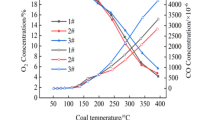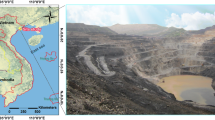Abstract
Ignition point, the temperature at which a chemical compound begins to burn naturally, is one of the important values from the viewpoint of industry and safety. This manuscript addresses a trial prediction of the ignition point for relatively simple chemical compounds including carbon, oxygen and hydrogen via data mining such as decision tree and random forest. I used fundamental material values and the number of characteristic structures as descriptors for chemical compounds. Our input data file includes 240 kinds of chemical compounds and we prepared other 10 as the test data. At first, I used “rpart” package of the “R”, one of the statistical programming language, in order to process decision tree. Furthermore I used “randomForest” with more data and more number of descriptors and I got better estimation of ignition point.
Access this chapter
Tax calculation will be finalised at checkout
Purchases are for personal use only
Similar content being viewed by others
References
Gasteiger, J., Engel, T. (eds.): Chemoinformatics. Wiley-VCH Verlag GmbH & Co. KgaA, Weinheim (2003)
Dehmer, M., Varmuza, K., Bonchev, D. (eds.): Statistical Modelling of Molecular Descriptors in QSAR/QSPR. Wiley-VCH Verlag GmbH & Co. KgaA, Weinheim (2012)
Tsai, F.-Y., Chen, C.-C., Liaw, H.-J.: A model for predicting the auto-ignition temperature using quantitative structure property relationship approach. Procedia Eng. 45, 512–517 (2012)
Shi, J., Chen, L., Chen, W.: Prediction on the auto-ignition temperature using substructural molecular fragments. Procedia Eng. 84, 879–886 (2014)
R Core Team: R: A language and environment for statistical computing. R Foundation for Statistical Computing, Vienna, Austria (2015). http://www.R-project.org/
Package “rpart”. https://cran.r-project.org/web/packages/rpart/rpart.pdf
Package “randomForest”. https://cran.r-project.org/web/packages/randomForest/randomForest.pdf
ICSC database. http://www.ilo.org/dyn/icsc/showcard.home
Acknowledgments
This work was partly supported by JSPS KAKENHI Grant Number 16K13739.
Author information
Authors and Affiliations
Corresponding author
Editor information
Editors and Affiliations
Rights and permissions
Copyright information
© 2017 Springer International Publishing AG
About this paper
Cite this paper
Hayashi, R. (2017). A Decision Tree of Ignition Point for Simple Inflammable Chemical Compounds. In: Tan, Y., Takagi, H., Shi, Y. (eds) Data Mining and Big Data. DMBD 2017. Lecture Notes in Computer Science(), vol 10387. Springer, Cham. https://doi.org/10.1007/978-3-319-61845-6_17
Download citation
DOI: https://doi.org/10.1007/978-3-319-61845-6_17
Published:
Publisher Name: Springer, Cham
Print ISBN: 978-3-319-61844-9
Online ISBN: 978-3-319-61845-6
eBook Packages: Computer ScienceComputer Science (R0)




